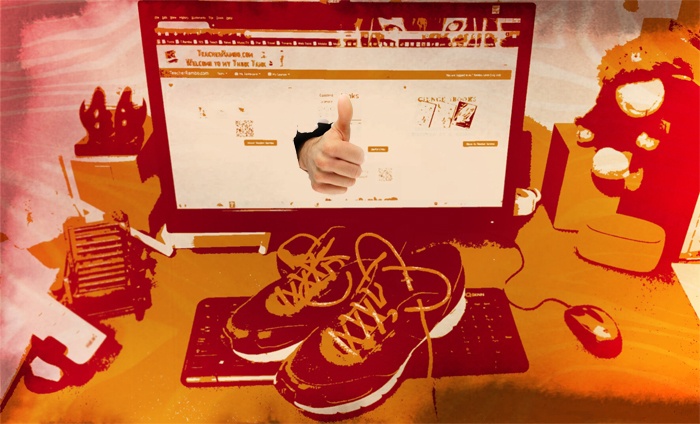Physical Activity And eLearning Development: What You Need To Know
If you are passionate about your eLearning development job, you may more often than not get carried away and forget to take care of the most important thing: YOU. Any demanding project may create an impossible schedule that causes us to work on it 24/7. Yes, you may not know it, but your brain might be restless about your project while you think you are having a good night sleep. Check how physical activity and eLearning development are deeply connected.
Work And Stress
While some stress at work is normal, excessive stress can impair your productivity and impact your physical and emotional health. Additionally, your ability to deal with it can signify the difference between success and failure, especially when creativity and user-centered approaches are required. You cannot control everything in your projects’ environment, but you can still find ways to manage stress at work. Reducing stress is not necessarily about making huge changes or rethinking your career, but rather about focusing on the one thing that is always within your control: YOU. One of the most effective ways to control your everyday stress is by practicing some moderate physical activity.
The Benefits Of Physical Activity
Regular activity can improve your quality of life. A minimum of 30 minutes a day of moderate physical activity can help you achieve the following benefits:
- Manage your weight better.
- Feel better and more energetic.
- Have better mood and less mood changes.
- Have a healthier state of mind and clarity.
- Feel more relaxed and sleep better.
- Helps with depression.
- Reduces the risk of a heart attack.
- Have a lower blood cholesterol level.
- Have lower blood pressure.
- Lowers the risk of type 2 diabetes and some cancers.
- Have stronger bones, muscles, and joints, and lower the risk of osteoporosis.
- Lowers your risk of falls (improves balance).
- Recovers better from a period of hospitalization or bed rest.
- Have better sex (which again improves ALL of the above).
Exercise may block negative thoughts or distract people from daily worries. By exercising with others we increase our social contact with actual people (not via a screen). Our eyes get a break from the destructive screen light, which if enters our eyes too often, may cause CVS; Computer Vision Syndrome.
Doing Some Physical Activity Is Better Than Doing None
To maintain health and reduce your risk of health problems, health professionals and researchers recommend a minimum of 30 minutes of moderate-intensity physical activity per day. Anything more than 30 minutes can be seen as a bonus, while even 10 minutes of walking, stretching, or working in the garden is far better than doing nothing.
Increasing your daily activities can come from small changes made throughout your daily habits, such as:
- Walking or cycling instead of using the car.
- Getting off a train or a bus stop earlier and walking the rest of the way.
- Using the stairs instead of the elevator.
- Walking the children to school or taking the dog for longer walks.
- Take often breaks from sitting in front of the screen.
Oh Dear, My Eyes
Staring at a computer screen for hours has become a part of our daily life. Unfortunately, all of that staring can put a real strain on your eyes. Computer Vision Syndrome acts as other repetitive stress injuries. It occurs when we are carrying out the same motion over and over again. Working on a computer adds screen’s flicker and glare, which worsen the symptoms. Computer Vision Syndrome may cause eye strain and discomfort such as blurred vision, double vision, red eyes, eye irritation, headaches and neck or back pain due to bad posture.
Help Your Eyes To Help You
When we dive into development mode, time seems to speed up, isn't it? I found a simple solution for that: Protect Your Vision. Protectyourvision.org is a free online application aimed at preventing or reducing the symptoms of a Computer Vision Syndrome (CVS) by reminding about systematical breaks. It has three modes:
- 20-20-20.
Every 20 minutes, take a break of 20 seconds; the application reminds you gently to take a break with a sound alarm and notification, when you approve: The screen turns dark for 20 seconds. - 60-5.
Every 60 minutes, take a break of 5 minutes. - Custom Mode.
Allows you to define the frequency and length of your breaks.
During the break time, close your eyes or focus on an object 6 meters (20 feet) away. It is also recommended to do eyes gymnastics (eyes exercises are available on their website).
Just Do It
Remember, in order to keep and do the great job that you are doing, you must keep yourself healthy, both physically and mentally. In order to do so, it is highly recommended that you take short breaks (if impossible to take long ones). Try to look away from the screen as often as possible to keep your eyes healthy and focused. Go for a walk, jogging, cycling, or a volleyball match with your pals.
My most creative ideas pop up while I’m cycling outdoors. At the crack of dawn, while breathing fresh air and surrounded by nature, clear mind makes place for new idea to come. Do whatever works for you; just do it.
Healthy developing!










